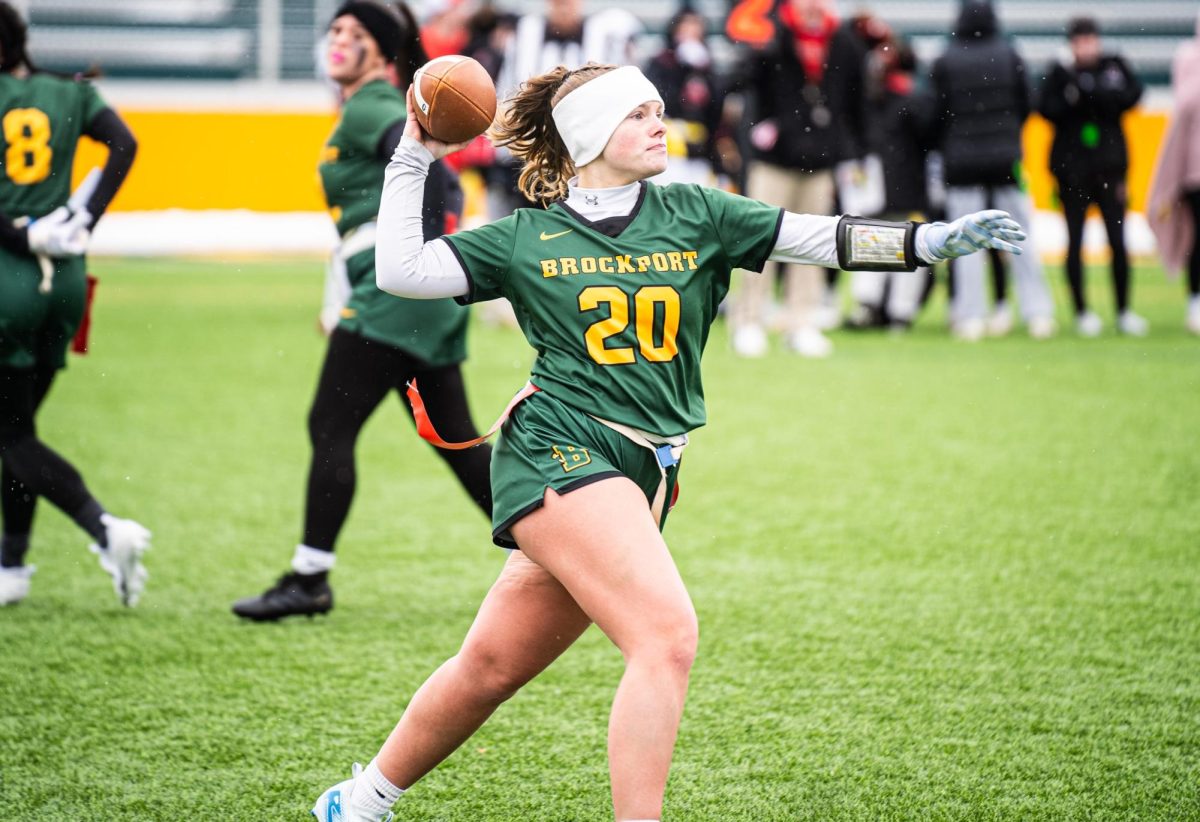By Jezelle Sergenton
Cut. Stitch. Dye. A new shirt that used to take skilled tailors days to produce is made in seconds. The fashion industry has been saturated by fast fashion brands targeting young consumers. The mass production of trending clothing at affordable prices has taken over the market. The price is only the beginning of why consumers are in the cycle of purchasing from fast fashion brands. Affordable clothing may come at a greater cost than the fashion industry, consumers and local vendors expected.
The environmental factors of this shift in production are undeniable. Overconsumption of cheaply made clothing results in textile waste and water pollution from chemical dyes. This knowledge has yet to stop the growth of these fashion brands. According to the Global Fast Fashion Market Report 2023, fast fashion brands are seeing continuous growth in profits. The fast fashion market is expected to continue this growth and is estimated to see $184.96 billion by 2027.

Individuals most versed in fashion have witnessed the shift to fast fashion and the impact it has on the industry. Mary Jacobs is the Assistant Event Planner for the Fashion Week of Rochester and works with many upcoming local designers. Jacobs has seen how designers have found creative ways to adjust to the increased affordable clothing.
“ Currently, many designers are trying to get their foot in the door,” said Jacobs.
” As a designer. Most of them are working with thrifted fast fashion pieces and repurposing them. I have also noticed that the cut and sew designers who work with fabric have to charge a higher price. Fast fashion prices have skewed people’s perspectives on clothing. They forget the craft, time and money spent making cut and sew pieces,” Jacobs said.

A customer shopping vintage at Lucky Flea market. Rochester, N.Y. October 29, 2023
Photo Credit: Jezelle Sergenton
The creative process of fashion has changed in response to fast fashion. The art of fashion design can be more expensive than most people are willing to pay. Fashion designers aren’t the only people affected by the popularity of fast fashion. The surplus of affordable clothing has also impacted how consumers buy clothing.
Avid online shopper Sin Alim has used fast fashion sites to keep up-to-date on the latest fashion trends. Social media drives most of Alim’s purchasing as she builds her online presence.
“I have always loved fashion and even took classes in design. I considered being a stylist and have recently started posting my outfits on Instagram. I have started buying clothes from Revolve to keep up with new posts. The affordability is what makes the shopping experience worth it. I get a new outfit without spending half a paycheck,” Alim said.
Sweatshop workers and child laborers used by many fast fashion brands allow for clothing affordability. The use of factories abroad and within the United States exploits the need for employment. Brands such as H&M and Forever 21, expect workers to survive off of unlivable wages and strenuous hours of labor. Fast fashion has impacted the lives of workers left to bare the weight of increasing demand.
The demand for fast fashion has left local vendors looking at their business from a fresh perspective. Joey Everts owns the clothing resale business Flipdrip. Everts’ passion for vintage is what drives his business, but fast fashion has given him a new motivation.
“Companies like Shein and affordable clothing retail stores that sell fast fashion vintage take business away from resellers. Selling authentic vintage is better for the environment. Fast fashion made me realize how selling vintage that is cool and trendy can prevent clothing from going into landfills. I feel like I am doing my part,” Everts said.

Flipdrip authentic vintage fall merchandise at the Lucky Flea. Rochester, N.Y. October 29 ,2023
Photo Credit: Jezelle Sergenton
The cost of fast fashion has impacted many of the pillars of the fashion industry. Fashion designers, consumers and local vendors are left to adapt to the changing market. Fast fashion may be more than a passing trend in the fashion industry.



























